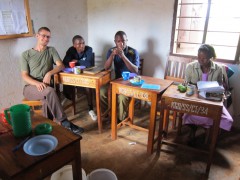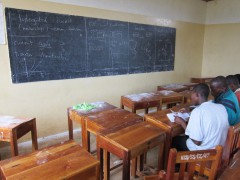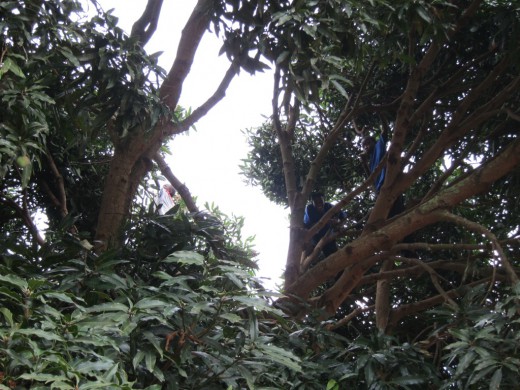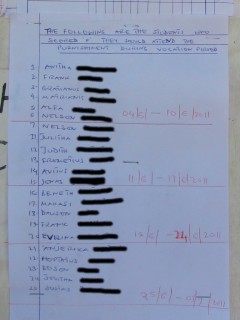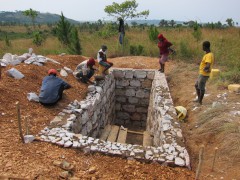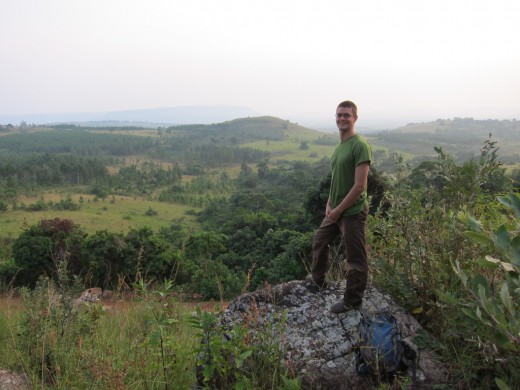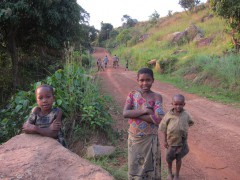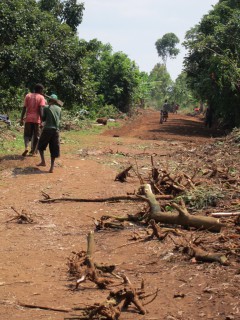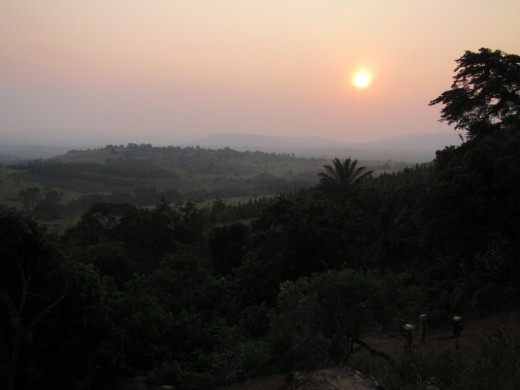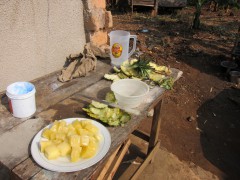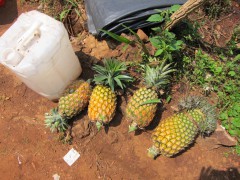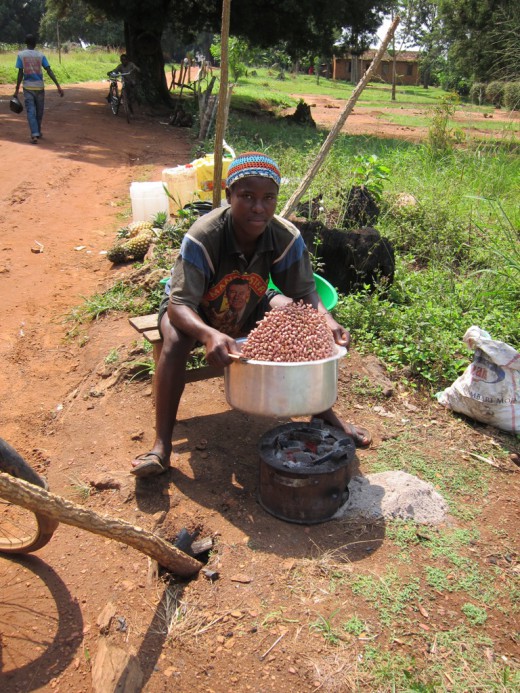Tanzania 10 — Looking Back
After some two weeks of traveling again, it is time to finally put here the last last pictures from Kagondo. At least until the next visit, which might be in September, and hopefully soon again after this year!
I’ll start with a few more pictures from school. The first is me with the hard core of my Physics students, mostly Form 4 (the final class). They are the ones I learned to know best, shared some conversations about hopes for the future and current lifestyle with, and who seemed to like my teaching style. One thing that puzzled me about that: I asked another group of students (the ones supported by Action 5) how my teaching was different from the other teachers‘ here, and they said it was fast — while I was breaking things up into small steps and repeating as much as I possibly could. I really don’t know what else I could have done. Oh well.
The next two are me in the staff room at my favorite time of day — tea break with chapati and mandazi, chatting with the colleagues. And one of my last Physics topics, transistors, on the blackboard. I was quite desperate with that, because I don’t remember actually learning about it in depth myself, and the book I had was obviously erroneous on most of it. And Wikipedia led me to a level of detail that was too much to teach, so I settled on something like a minimal solution: leaving some holes in the explanations to „just believing“ or rather „just learning“, which I suppose came as standard practice to the students.
The next one are students in one of the big mango trees getting something like a breakfast. There are some not-yet-ripe mangoes in the staff room picture above, too, and I tasted them — I remember from India that green mangoes are really nice when cooked. But I can’t see a reason for eating them raw other than being very hungry…
These are some around-the-school activities. Starting with an illustration of how institutionalized punishment is as a motivational instrument: „The following are the students who scored ‚F‘. They should attend the punishment during vocation period“. I was told that at least the punishment was planned to be „developmental“, meaning some work around the school I guess (see below). Still … The next is the head teacher inspecting the work on the new student toilets. I was a little shocked to hear that the nice stone pit is for single use only, and will be abandoned when full. There is plenty of space for more toilets I was told.
This is an example of the work students do to maintain the school: here cutting grass with simple metal things somewhat similar to scythes. Well, I suppose it provides some sort of physical exercise, too. The abundance of activities like this in everybody’s life might explain why nobody bothers to purposefully move or exercise.
Now moving on to some of my explorations of the surroundings of the village. First me enjoying the countryside I very much fell in love with. Rolling hills covered with thick green, the distant ones smoothed by the humid air’s haze.
Some children very interested in watching me watching the sunset, trying to speak with me, but our command of Kiswahili and English, respectively, was too poor for a real conversation. They were on their way to fetch water, as can be seen in the background and on the picture one down. To the right a picture of the new street being built through Kagondo to some of the surrounding smaller villages. A project that was promised by my friend here during his campaign for election to the regional council, and promptly realized. I also like the way it is done — it is a very elaborate dirt road, which will hopefully endure many rain seasons, and uses a lot of local work next to the specialists from another part of the country.
The simple pleasures of my village life: First of all the fresh fruit, here the best pineapples I have ever eaten (and can possibly imagine), the flesh dark with sweet liquid. And the place outsized the house where I usually cut them up, something I became quite expert at. The next picture is from the sale at the roadside opposite my favorite shop.
And this is the son of the same shop owners, preparing another of my delights — fresh roasted peanuts.
Finally another highlight of the village life: In one of the two convents a nun is taking the final vow, which is celebrated very much like a wedding. Cake and all, the mother is there to melodramatically say farewell, and the bishop at her side as the next best thing to god you can get. Also all the local artistic groups performed — here are children singing and dancing, welcoming her to the village in cute English. And in front of them the usual sign of appreciation for the artists: cash. Which is usually delivered by somebody joining them in their activity somewhat, approaching in a dancing fashion and throwing the money to the ground in an exaggerated gesture.

